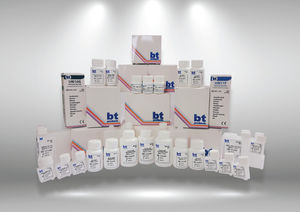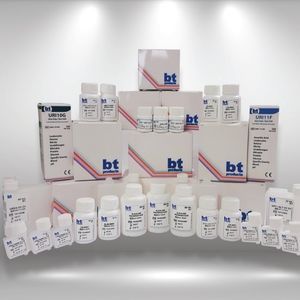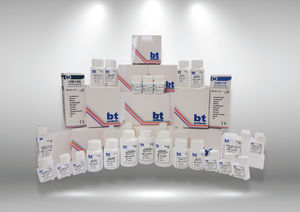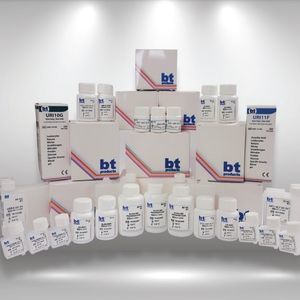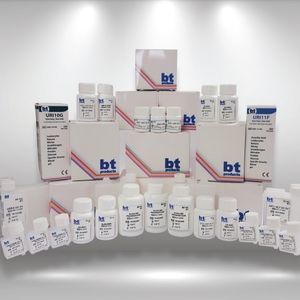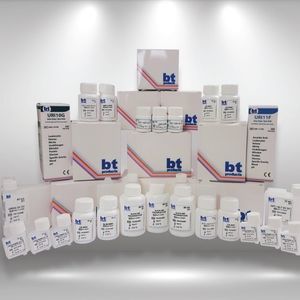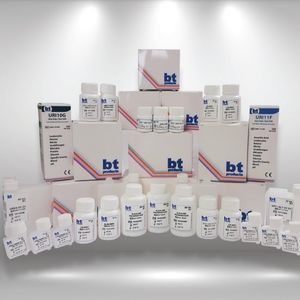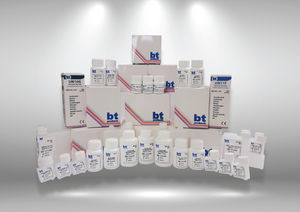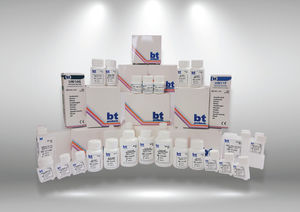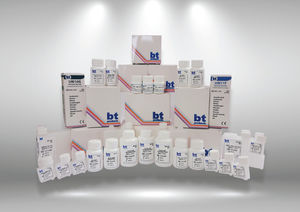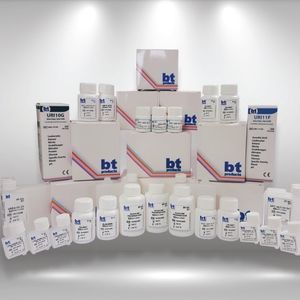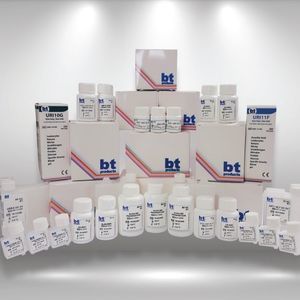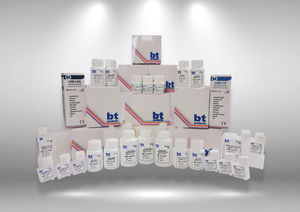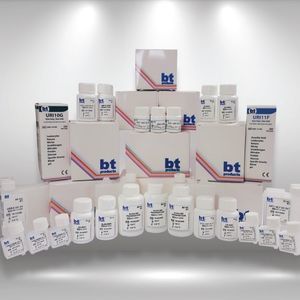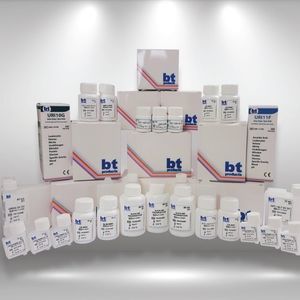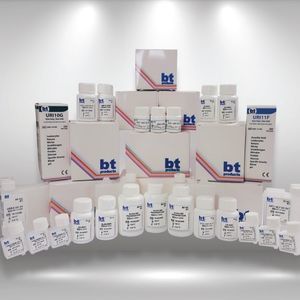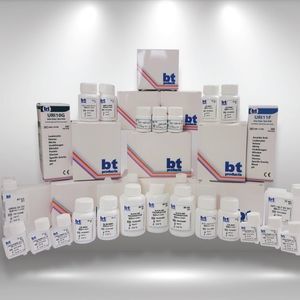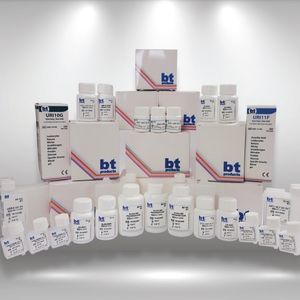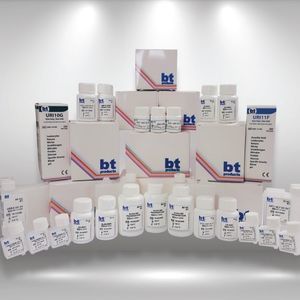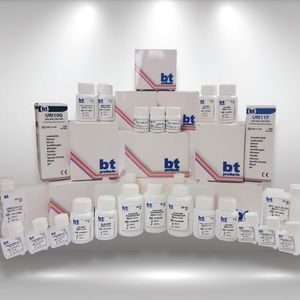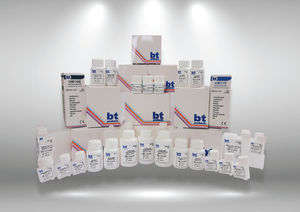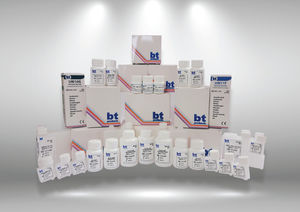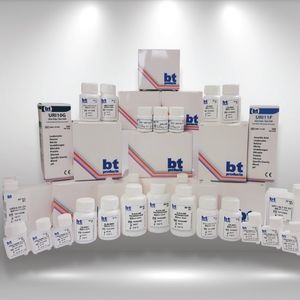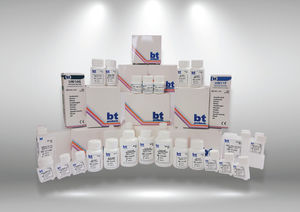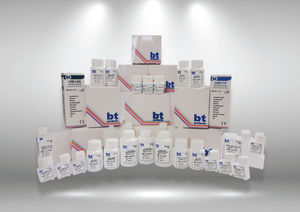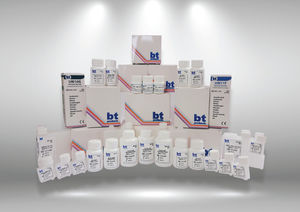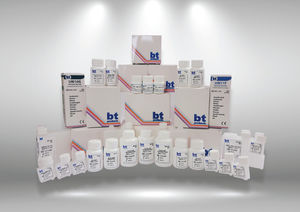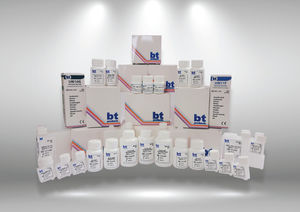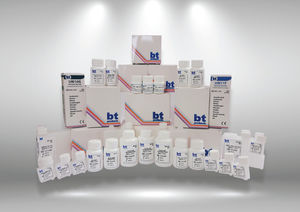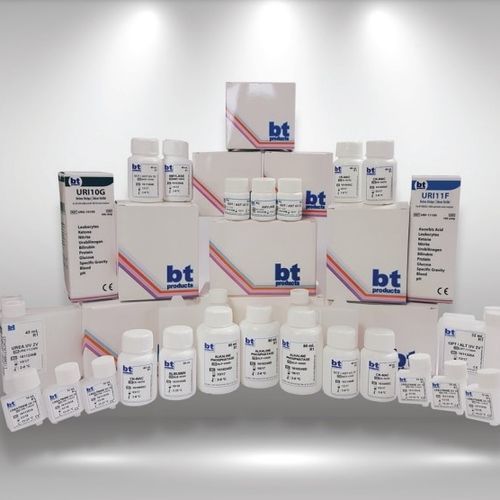
- Laboratory
- Laboratory medicine
- Solution reagent
- BILIMSEL TIBBI ÜRÜNLER
Copper reagent kit COP-20 seriessolutiondiagnosticfor clinical chemistry
Add to favorites
Compare this product
Characteristics
- Type
- solution
- Applications
- diagnostic, for clinical chemistry
- Tested parameter
- copper
- Storage temperature
Min.: -20 °C
(-4 °F)Max.: 8 °C
(46 °F)
Description
For the quantitative determination of copper in serum or plasma. For in vitro diagnostic use only.
METHODOLOGY
Serum copper is routinely determined by atomic absorption spectrophotometry (AAS) or spectrophotometry in clinical laboratories. AAS is the preferred method but these methods generally involve the reaction of a protein-free filtrate with organic solvents or reagents for deproteinizing, and none is satisfactory in terms of sensitivity, rapidity, and easy of measurement .In this method compounds are water soluble, and react easily and quickly with the metals forming intensely colored complexes.
Principle:
In an acid solution (pH 4.7),copper is released from The Ceruloplasmin protein and reduced. Afterwards the cuprous ion reacts with the 3,5DiBr-PAESA.[4-(3,5-dibromo-2-pyridylazo)-N-ethyl-N-(3-sulfopropyl) aniline] stain and forms a stable coloured complex which is photometrically measured at 580 nm. The colour intensity of this complex is proportional to the amount of copper in the sample.
REAGENT COMPOSITION
Acetate buffer pH 4,7 ≤ 0,022 mM
3,5-DiBr-PAESA 0,2 mM
Surfactant ≤ % 1
INTERFERENCES
No interferences were observed to bilirubin up to 15 mg/dL , hemoglobin up to 0,5 mg/dL and triglycerides up to 1000 mg/dL.
MATERIALS REQUIRED BUT NOT PROVIDED
1. Clinical chemistry analyzer or colorimeter capable maintaining constant tempereture (37°C) and measuring absorbans at 580 nm
2. Deionize water and related equipment e.g. pipettes
3. Analyzer specific consumables, e.g: sample and read cups
4. Control and calibrator materials
PROCEDURE
Wavelength : 580 nm
Working temperature : 37°C
Optical path : 1 cm
Assay type : Endpoint
Catalogs
No catalogs are available for this product.
See all of BILIMSEL TIBBI ÜRÜNLER‘s catalogsOther BILIMSEL TIBBI ÜRÜNLER products
Universal Bottled Clinical Chemistry Reagents
Related Searches
- Solution reagent kit
- Protein reagent kit
- Diagnostic reagent kit
- Laboratory reagent kit
- Enzyme reagent kit
- Histology reagent kit
- Dye reagent
- Antibody
- Buffer solution reagent kit
- Clinical chemistry reagent
- Clinical chemistry analyzer
- Quality control reagent kit
- Clinical reagent kit
- Virus reagent kit
- Automatic clinical chemistry analyzer
- Benchtop clinical chemistry analyzer
- Test strip
- Tissue reagent kit
- Electrolyte reagent kit
- Colorimetric reagent kit
*Prices are pre-tax. They exclude delivery charges and customs duties and do not include additional charges for installation or activation options. Prices are indicative only and may vary by country, with changes to the cost of raw materials and exchange rates.



